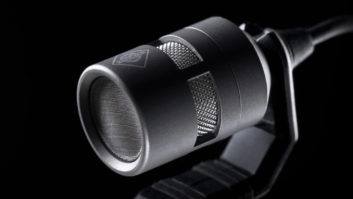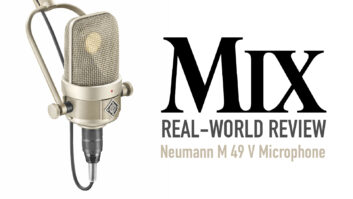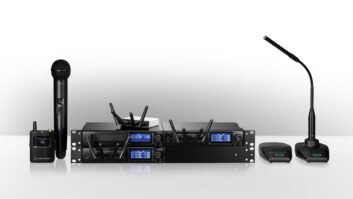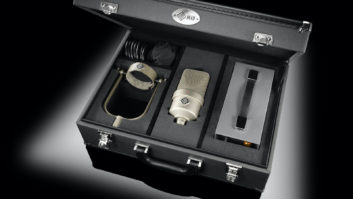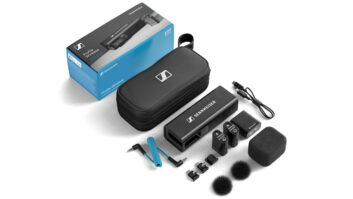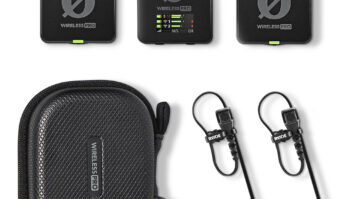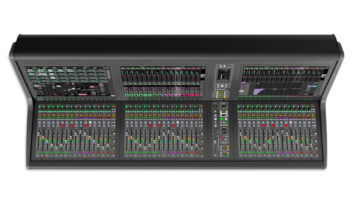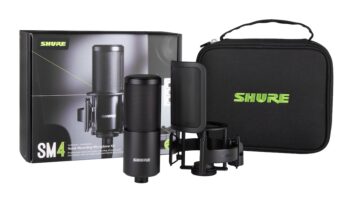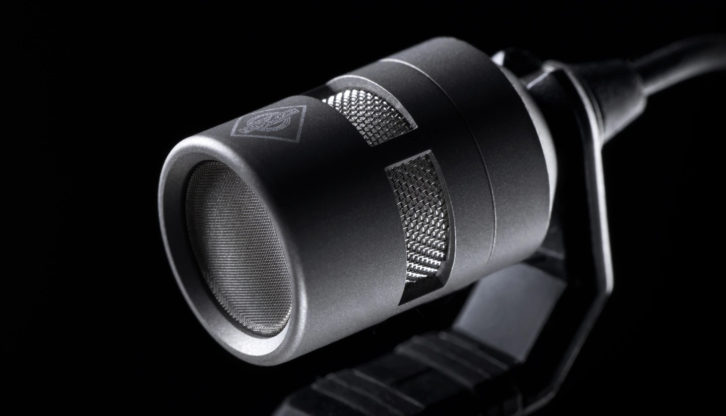
This article originally appeared in the March 2022 issue of Mix. Innovations is a monthly column in which different pro audio manufacturers are invited to discuss the thought process behind creating their products of note. Stephan Mauer is Portfolio Manager – Live Sound & Broadcast for Neumann Berlin.
Acoustic instrument reinforcement on stage is a complex and delicate task. And while several competitive microphone systems have been introduced to the market in recent years, sound engineers and musicians have been craving a high-quality, clip-on microphone system that is able to deliver superior sound across a broad range of acoustic instruments.
Neumann recently announced its Miniature Clip Microphone (MCM) system: an electret miniature condenser microphone on a flexible gooseneck. The system includes nine instrument-specific clips so it can be mounted to a variety of acoustic instruments. While Neumann is known primarily for its studio condenser microphones, the company’s product portfolio has always included a number of high-quality microphones designed for live applications as well; the new MCM system sees this portfolio evolving even further.
In developing the Miniature Clip Microphone solution, Neumann explored the possibility of implementing true condenser microphone technology with a small form factor, but we eventually realized that this approach would introduce significant limitations— for example, in delivering substantial dynamic range while working on a low-voltage pocket transmitter. The system’s dynamic range, however, is key in providing both extremely low noise floor and the ability to cope with very high sound pressure levels.
Therefore, we decided to invest in a completely new electret design to meet the market requirements and develop a brand-new capsule from scratch.
At its core, our new electret design presented several advantages, allowing the product to meet our stringent performance and form factor expectations, deliver consistently high quality in serial production and, at the same time, eliminate the phantom power requirement.
Sonically, we achieved a balanced, neutral frequency response as well as a refined impulse reproduction. When our new system was applied to diverse instruments such as strings, brass, drums, percussion and piano, the sound was both detailed and natural. Throughout our design process, special attention was paid to properly capture the fundamental frequency of the instruments, which can be a challenge with competitive microphone solutions.
Innovations: Allen & Heath Continues to ‘Rethink The Matrix’
In tests and trials with accomplished musicians using the Neumann KK 14 electret capsule, a cardioid directional pattern was identified as the best solution to deliver both an open sound and a sufficient degree of isolation. The capsule’s directivity is constant throughout the entire frequency range and therefore offers sufficient isolation from nearby instruments, even in the fundamental frequency range.
At the same time, our new electret microphone design was developed to handle 153 dB SPL, while operating with very low self-noise—which again is important in capturing softer sounds. This is the result of the interaction between the relatively large diaphragm and circuit design. In this respect, the microphone benefits from our decades of development experience in circuit design, even if the power supply is limited.
To achieve the expected production consistency, the KK 14 capsules were designed with a layer-based construction involving eight individual components. As a result, the individual components can be optimally designed and independently manufactured. In parallel, a new manufacturing process was developed by Neumann whereby the assembly of the components is done manually and is subject to stringent quality controls.
Aside from sonic requirements, it was very important for us to ensure that the new microphone also delivered on build quality and ROI—which is particularly important for rental companies. Therefore, we chose a titanium housing for the capsule, which is robust and provides protection for all the internal elements. Meanwhile, a modular design allows the capsule to be separated from the associated gooseneck so individual components can be replaced if necessary.
Toward the end of 2021, and following several years of development and testing, we deployed several prototypes of the new microphone system among several orchestras and bands, which have subsequently used it in high-profile concerts and touring operations. So far, the response has been outstanding, with our customers describing the microphone’s sound as “smooth and open” with almost no proximity effect. Others indicate that they no longer feel the need to use EQ to correct frequencies or arrive at a great sound. At Neumann, we feel we have been successful in introducing yet another unique solution to the marketplace.
